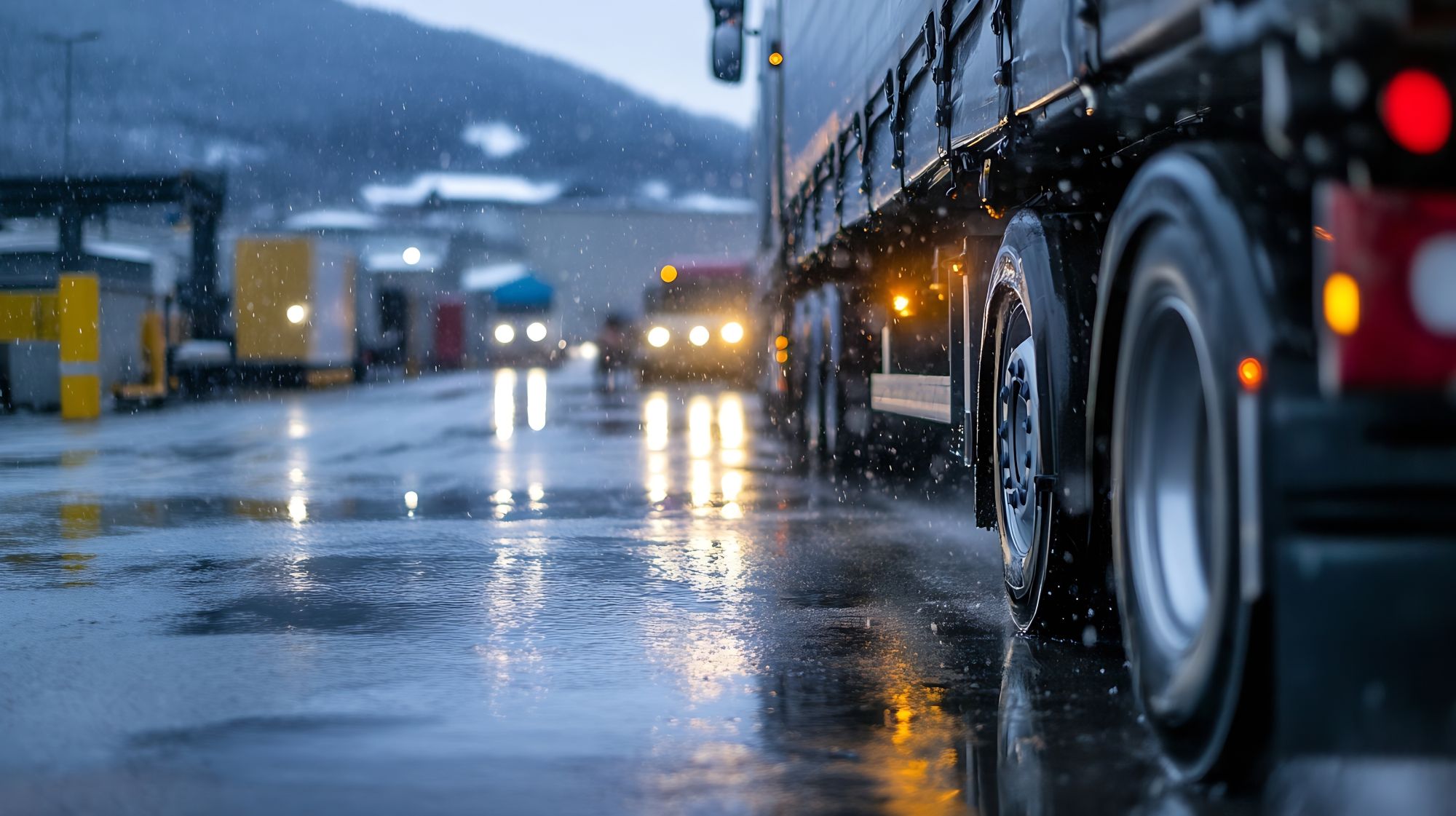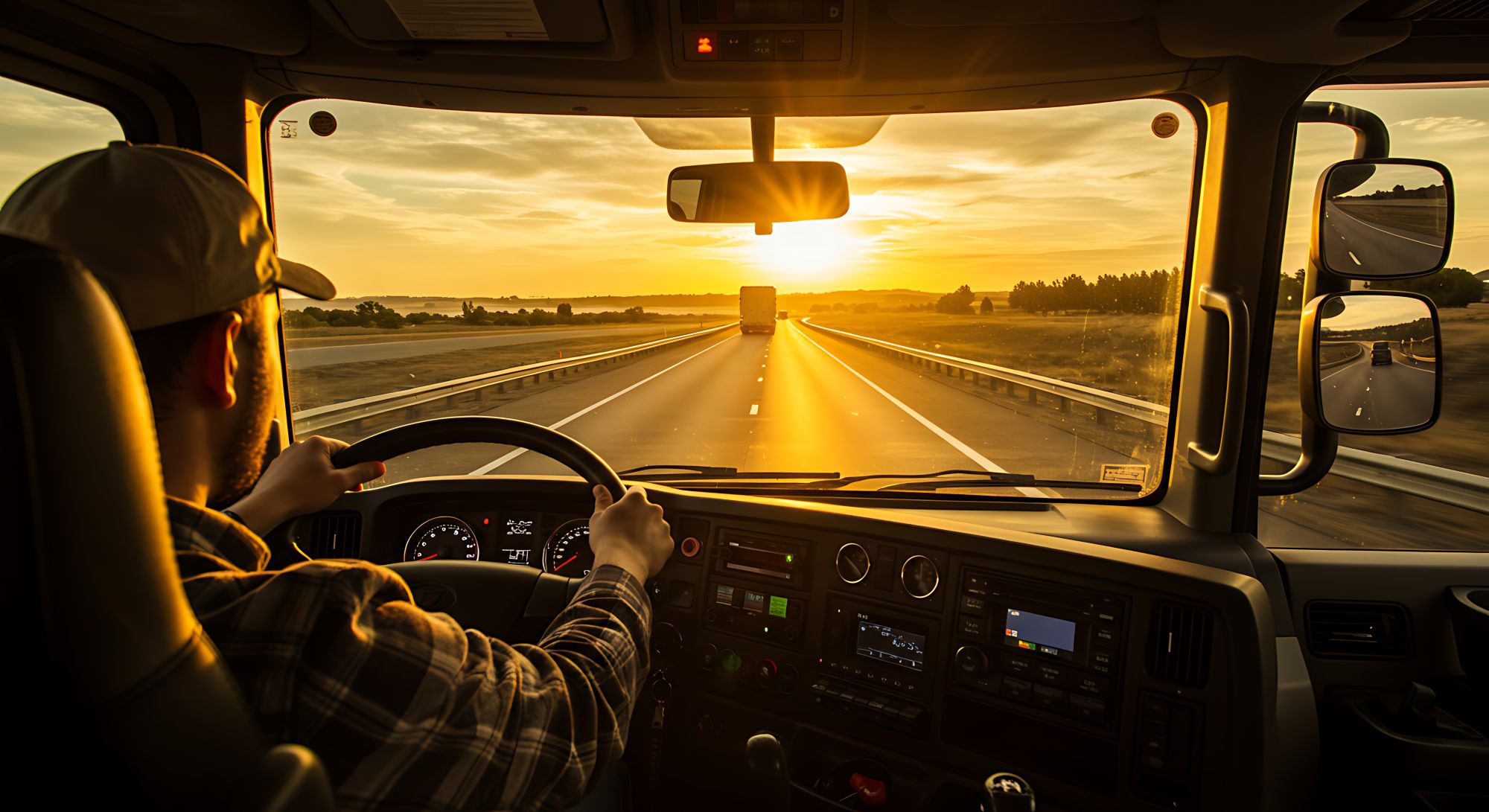
Guest
Come il cambiamento climatico sta influenzando il settore della mobilità
Creato: 21/07/2025
•
Aggiornato: 21/07/2025
Il cambiamento climatico non è più un rischio lontano. Per chi lavora nel settore del trasporto su strada, è una realtà operativa quotidiana, che diventa sempre più difficile da ignorare ogni anno che passa. Dalle ondate di calore che sciolgono l'asfalto alle inondazioni che interrompono le rotte principali, l'impatto del cambiamento climatico è parte integrante dell'attività di trasporto merci.
Per i gestori di flotte, questo significa navigare in normative in evoluzione, aggiornare le infrastrutture e ripensare la pianificazione della continuità. Per i conducenti, significa adattarsi a nuovi rischi sulla strada, dallo scoppio dei pneumatici all'interruzione delle finestre di consegna. E per l'intero settore, segnala la necessità di un approccio alla mobilità più resiliente e consapevole del clima.
Le perturbazioni meteorologiche sono una minaccia operativa
Nel luglio 2022, il Regno Unito ha vissuto il giorno più caldo del mondo. Quando le temperature sono salite a 40℃, le strade hanno iniziato ad ammorbidirsi, con sezioni della A14 chiuse a causa del degrado della superficie. Gli operatori delle flotte sono stati costretti a deviare le consegne, a volte con poco preavviso, mentre le temperature dei motori si sono impennate e i veicoli hanno faticato a mantenere le prestazioni.
Nello stesso anno, i forti venti della Tempesta Eunice hanno causato danni diffusi lungo i corridoi di trasporto merci dell'Europa occidentale, rovesciando i veicoli a sponde alte e danneggiando i carichi sensibili alla temperatura. Nel frattempo, nel gennaio 2024, la tempesta Henk ha inondato vaste aree dell'Inghilterra centrale. Le strade principali delle Midlands erano impraticabili e alcuni autisti sono rimasti bloccati per ore.
Non si tratta di eventi isolati. Sono segnali di un sistema di trasporto sempre più vulnerabile alle minacce climatiche. Le superfici stradali, i componenti dei veicoli e le reti logistiche sono tutti messi alla prova dal cambiamento delle condizioni - e le conseguenze si fanno sentire su tutta la catena di approvvigionamento.
Catene di approvvigionamento interrotte
Quando si tratta di perturbazioni legate al clima, gli impatti non si fanno sentire solo sulle singole rotte. Intere catene di approvvigionamento vengono colpite, a volte con scarso preavviso. Nei Paesi Bassi, l'innalzamento del livello del mare e le precipitazioni più intense stanno spingendo le autorità e le imprese a rivalutare la resilienza delle infrastrutture logistiche critiche, in particolare nelle aree industriali a bassa quota.
Il porto di Rotterdam - il più grande porto marittimo d'Europa - ha intrapreso azioni attive per adattarsi al rischio climatico, rinforzando le pareti delle banchine, elevando le strade di accesso e migliorando i sistemi di raccolta delle acque piovane per proteggersi dalle inondazioni. Anche i centri logistici interni sono sotto esame, poiché le condizioni meteorologiche estreme hanno messo in luce le vulnerabilità delle vie di accesso e del drenaggio.
Innovazione dei trasporti
La tecnologia delle flotte sta migliorando rapidamente, soprattutto per quanto riguarda l'elettrificazione e la diagnostica intelligente. Ma il cambiamento climatico sta creando nuovi problemi anche per i veicoli più avanzati. L'efficienza della batteria può diminuire fino al 20% con il freddo, riducendo l'autonomia effettiva dei furgoni elettrici. Nel frattempo, le alte temperature accelerano il degrado dei pneumatici e mettono a dura prova i sistemi di raffreddamento dei veicoli.
Per affrontare questi problemi, alcuni operatori stanno investendo in sistemi di manutenzione predittiva che utilizzano la telematica per anticipare l'usura e programmare le riparazioni prima che si verifichino guasti costosi. Altri stanno migliorando i sistemi di comfort della cabina per proteggere il benessere del conducente durante i periodi di caldo o freddo estremo. Sebbene questi cambiamenti comportino un investimento iniziale, possono dare i loro frutti in termini di tempi di attività, sicurezza e fidelizzazione dei conducenti.
L'aumento del rischio climatico sta ridisegnando anche le assicurazioni. Alcuni assicuratori stanno rispondendo all'aumento della frequenza dei sinistri causati da eventi atmosferici estremi aumentando i premi e inasprendo le esclusioni. Le polizze per l'interruzione dell'attività, in particolare, sono sottoposte a maggiore controllo, soprattutto quando le catene di approvvigionamento sono vulnerabili a ripetute interruzioni. Anche se l'assicurazione merci rimane un aspetto da tenere in considerazione, non tutte le polizze coprono automaticamente i ritardi causati da eventi climatici come inondazioni o venti forti.
I gestori di flotte dovrebbero rivedere la loro copertura alla luce di questi rischi emergenti. Ciò significa verificare la presenza di esclusioni, valutare come vengono definiti gli eventi legati al clima e assicurarsi che le lacune critiche, come i tempi di inattività dovuti alla chiusura delle strade, siano adeguatamente coperte. In alcuni casi, dimostrare un approccio proattivo alla gestione del rischio, alla mitigazione delle alluvioni e alla formazione dei conducenti può contribuire a garantire condizioni più favorevoli.

Il panorama normativo
Mentre gli impatti fisici del cambiamento climatico sono già visibili, i cambiamenti normativi stanno aggiungendo un ulteriore livello di complessità per gli operatori. Le zone a basse emissioni si stanno espandendo rapidamente in tutto il Regno Unito e in Europa, ponendo nuovi requisiti alla composizione e alla conformità delle flotte. A Londra, la Ultra Low Emission Zone (ULEZ) continua a crescere, mentre città come Birmingham e Oxford hanno introdotto le proprie varianti.
A livello europeo, il pacchetto Green Deal e Fit for 55 hanno fissato obiettivi ambiziosi per la decarbonizzazione. I gestori delle flotte sono incentivati - e sempre più spesso obbligati - a passare a carburanti e tecnologie più puliti. Dai mandati di elettrificazione alle regole di trasparenza della catena di fornitura, gli operatori si trovano ora di fronte a una nuova soglia di riferimento per ciò che è considerato una pratica commerciale accettabile.
Per chi gestisce le flotte, questi cambiamenti rappresentano sia una sfida logistica che un'opportunità strategica. L'adozione della sostenibilità non è solo una questione di evitare le sanzioni, ma anche di essere all'altezza del futuro delle operazioni e di stare al passo con le mutevoli aspettative dei clienti.
Costruire operazioni resilienti
L'adattamento non avviene da un giorno all'altro, ma i cambiamenti incrementali possono avere un impatto significativo. Alcuni operatori stanno effettuando valutazioni del rischio climatico per le loro flotte, identificando i beni e i percorsi più vulnerabili alle interruzioni. Altri offrono ai conducenti una formazione aggiornata per migliorare la sicurezza e il processo decisionale durante gli eventi meteorologici estremi.
Anche la scelta del carburante sta cambiando. Gli autotrasportatori alla ricerca di alternative a basse emissioni di carbonio si rivolgono all'HVO (olio vegetale idrotrattato), un'alternativa al diesel che riduce le emissioni senza richiedere nuove infrastrutture. Nel frattempo, coloro che investono in software per l'ottimizzazione del carico stanno riscontrando vantaggi non solo in termini di risparmio di carburante, ma anche di riduzione delle emissioni a sostegno degli obiettivi di conformità.
Non ci sono più dubbi sul fatto che il cambiamento climatico stia plasmando il futuro del trasporto su strada, non tra decenni, ma proprio adesso. La sfida per gli operatori è passare da una mentalità reattiva a una più strategica e a lungo termine. Ciò significa comprendere i rischi, agire tempestivamente e riconoscere che la resilienza sta rapidamente diventando una fonte di vantaggio competitivo.
"Gli operatori delle flotte di tutto il Regno Unito e dell'Europa ci dicono la stessa cosa", afferma Nick Renton, responsabile della strategia europea e dello sviluppo commerciale di SNAP. "Le perturbazioni climatiche non sono un rischio futuro, ma sono già presenti e influenzano tutto, dall'immagazzinamento alla pianificazione dei percorsi, fino al benessere dei conducenti. Le flotte che prospereranno saranno quelle che tratteranno la resilienza climatica come una strategia aziendale, non solo come una risposta all'emergenza".
"È importante perché il costo dell'inazione sta aumentando, non solo dal punto di vista finanziario, ma anche in termini di mancate consegne, tempi di inattività e benessere dei conducenti sulla strada. Se vogliamo che le merci continuino a circolare e che le aziende crescano, dobbiamo iniziare a costruire questa resilienza adesso".
Noi di SNAP lavoriamo a stretto contatto con le flotte di tutto il Regno Unito e dell'Europa per aiutarle a navigare in questa nuova realtà. Che si tratti di approfondimenti, partnership o strumenti più intelligenti per le operazioni su strada, siamo qui per sostenere coloro che fanno girare le ruote, in qualsiasi condizione atmosferica. Iscrivetevi oggi stesso per approfittare delle nostre soluzioni di gestione della flotta.



